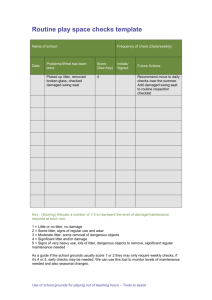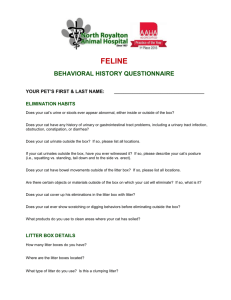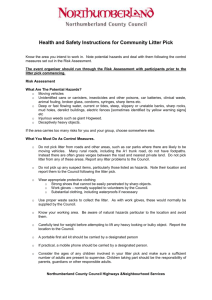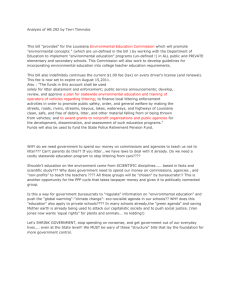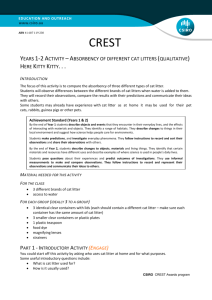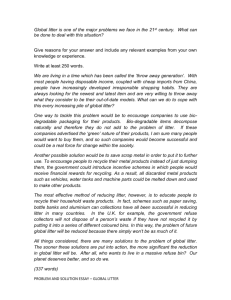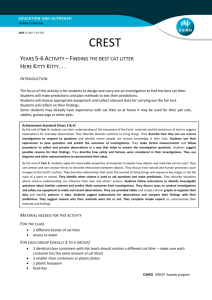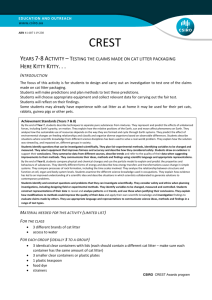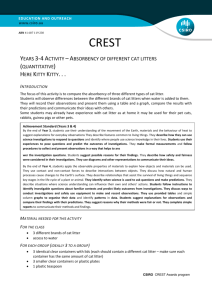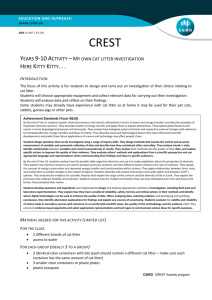Foundation CREST Activity
advertisement
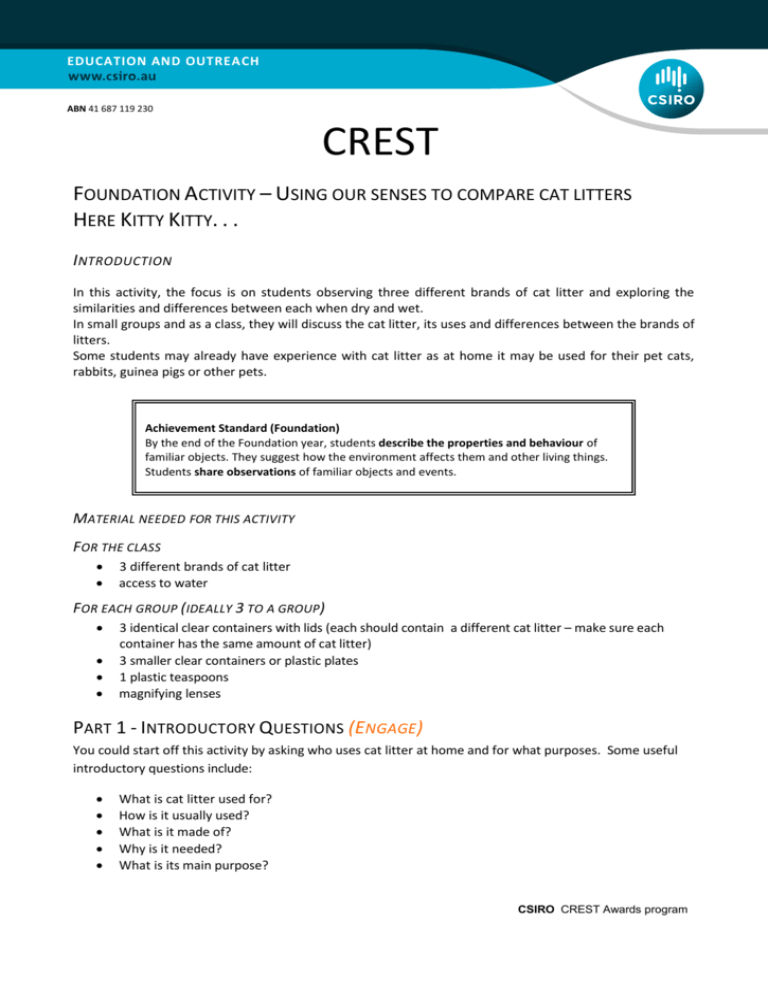
EDUCATION AND OUTREACH EDUCATION AND OUTREACH ABN 41 687 119 230 CREST FOUNDATION ACTIVITY – USING OUR SENSES TO COMPARE CAT LITTERS HERE KITTY KITTY. . . I NTRODUCTION In this activity, the focus is on students observing three different brands of cat litter and exploring the similarities and differences between each when dry and wet. In small groups and as a class, they will discuss the cat litter, its uses and differences between the brands of litters. Some students may already have experience with cat litter as at home it may be used for their pet cats, rabbits, guinea pigs or other pets. Achievement Standard (Foundation) By the end of the Foundation year, students describe the properties and behaviour of familiar objects. They suggest how the environment affects them and other living things. Students share observations of familiar objects and events. MATERIAL NEEDED FOR THIS ACTIVITY FOR THE CLASS 3 different brands of cat litter access to water FOR EACH GROUP (IDEALLY 3 TO A GROUP) 3 identical clear containers with lids (each should contain a different cat litter – make sure each container has the same amount of cat litter) 3 smaller clear containers or plastic plates 1 plastic teaspoons magnifying lenses PART 1 - INTRODUCTORY QUESTIONS (ENGAGE) You could start off this activity by asking who uses cat litter at home and for what purposes. Some useful introductory questions include: What is cat litter used for? How is it usually used? What is it made of? Why is it needed? What is its main purpose? CSIRO CREST Awards program EDUCATION AND OUTREACH EDUCATION AND OUTREACH ABN 41 687 119 230 CREST Add words to a word wall. Word wall – A word wall is an organised collection of words related to the topic that is displayed in the room. A word wall can also have pictures to accompany the words. It helps sounds, recognise and spell words and can provide reference support during reading and writing. PART 2 – OBSERVING & EXPLORING CAT LITTER (EXPLORE, EXPLAIN) Give each group a set of the three clear containers that contains the different cat litter. Ask students to look at the cat litter. Focus questions What colour is it? What is the texture like? Are all three the same? How are they different? Which has the biggest pieces? What do you think they are made of? Ask students to take out a small amount of the cat litter and place it in the smaller container or plastic plate. Ask the students to have a closer look with the magnifying lenses and to feel the cat litter. Focus questions What else can you see? What does the cat litter feel like? Is it smooth? Is it gritty? Repeat with the other 2 samples. Ask students to add a few drops of water to the cat litter using the teaspoon. Focus questions What happens? Does the litter stick together? Does it fall apart? Does it feel gritty? Does the litter change colour? Does the litter change in size? Does the water spread out, or stay together? Repeat with the other 2 samples. CSIRO CREST Awards program EDUCATION AND OUTREACH EDUCATION AND OUTREACH ABN 41 687 119 230 CREST PART 3 – CLASS DISCUSSION (ELABORATE & EVALUATE) Which of the three cat litters do they think would be ‘best’ for cats to use and why? You may need to ask students to explain what they mean by ‘best’. What observations convinced them to make this judgement? A SSESSMENT R UBRIC This assessment rubric is based on the content descriptors of the Science Inquiry Skills strand of the Australian Curriculum: Science It is provided as guide for you to use with the above activity. Please feel free to adapt or develop your own rubric to use with your students. Science Inquiry Skills Developing Achieving Questioning and Predicting Struggles to respond to questions about the litters’ appearance, uses, differences, etc Responds well to questions about the litters’ appearance, uses, differences, etc Planning and Conducting Makes limited observations about the litters using sight, smell and touch. Explores and makes various observations about the litters, using the senses of sight, smell and touch Processing and Analysing Data and Information Contributes little to discussions and represents few ideas in drawings Engages in discussions about the litters and uses drawing to represent ideas Communicating Shares few observations and ideas about the litters and their differences. Articulates to others their observations and ideas about the litters and their differences This activity also links to the following in the Australian Curriculum: Science Science as a Human Endeavour Nature and development of science Science involves exploring and observing the world using the senses Science Understanding Chemical Sciences Objects are made of materials that have observable properties CREST Link This activity leads into the Green CREST Science Activity in the Pets and Other Animals topic. A copy of the activity is available in the Introductory CREST Teacher Handbook. More information about CREST is available at www.csiro.au/crest CSIRO CREST Awards program
